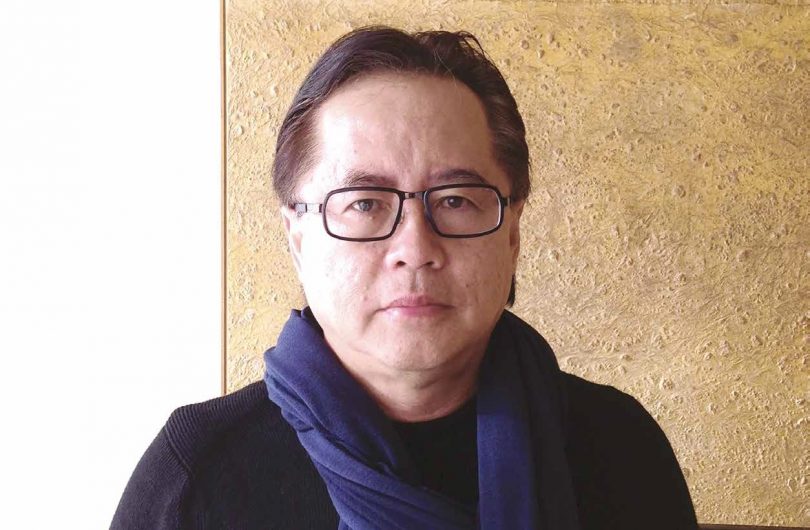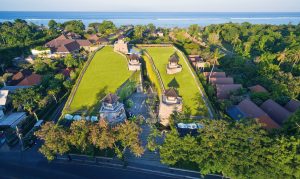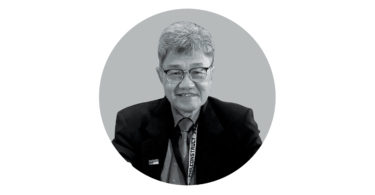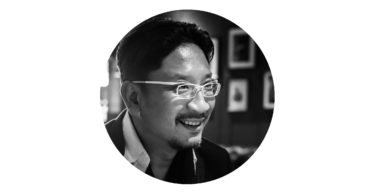After completing his study in Australia, Budiman Hendropurnomo had a chance to do internship and worked at Denton Corker Marshall, a renowned architectural firm based in Melbourne. Upon returning to Indonesia, he established PT Duta Cermat Mandiri (DCM) and designed Blok M Plaza in Jakarta and Hotel Tugu Malang in East Java as their first major projects. He is one of the leaders in the evolution of sustainable design.
Budiman leads the DCM Jakarta studio with distinct experience and notable specialisation in many important projects, including resorts, hotels, offices and apartments. His abilities as an architect are especially evident in his design of Maya Ubud Resort, a project that was an achievement of Balinese heritage with natural representation of the richness of Indonesian cultural tradition. His creativity and consistency in design with strong local touch makes DCM Jakarta a trusted firm in handling massive and challenging projects throughout Indonesia. Concisely, the sustainability concept always goes into their best designs.
Please let us know how you started the Denton Corker Marshall (DCM) Jakarta back then and develop the firm until today.
DCM Jakarta was formally established in 1987 with projects like Blok M Plaza and Exchange House. The firm grew in the years following the Asian crisis with boutique hotels and lifestyle centres, such as Plaza EX, Ciwalk and UOB Plaza. In the last five years, some of DCM’s major projects are completed, like Kompas Multimedia Tower, The Tower, Alila Solo and Maya Sanur.
We believe it is our positive contribution to the preservation of our environment.
What is your approach to designing a project?
We normally started with a bit of research on the functional spaces and vision from the client. The design also needs to have a strong context and dialogue with its surroundings and the environment.
What does creativity in architecture mean to you?
If a space could be created such that it elevates the emotion to a higher level, then we can call this creativity in architecture.
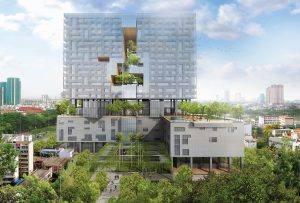
RA Condotel | Photo by DCM Jakarta
In relation to the Green building theme in this issue, why are your projects always close to the Green concept?
We believe it is our positive contribution to the preservation of our environment. And it should guide our architectural style.
Which were the previous projects that became pioneers in technology or Green building innovations so far?
In the last decade, we had a client—Kompas Gramedia Group—who was concerned about the sustainable concept. So, we have consistently improved our designs for their projects, from the double glazing that was applied at Allianz Tower to the double skin that we designed for UMN Towers and double skin with technologically advanced glazing that was implemented at Kompas Multimedia Tower. Their buildings in Indonesia continue to be at the forefront of Green and sustainable architecture.
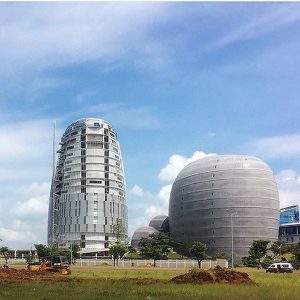
UMN Campus | Photo by DCM Jakarta
Please tell us about the Green project that you like the most from DCM Jakarta.
There are some, but in 1999 to 2000, we designed Maya Ubud Resort and Spa, a traditional Balinese hotel with natural materials that produced almost zero carbon footprint since all natural building materials were obtained less than 20 kilometres from the site. Until now, all grey water is recycled for watering the 12-hectare landscaped garden. All lighting has been converted to LED and we can call it an energy-efficient hotel with naturally ventilated public areas. Fifteen years later, the same owner asked me to design Maya Sanur, where a man-made hill covered with sand from the basement excavation was moved to the rooftop to create the gardens above the main hotel structure.
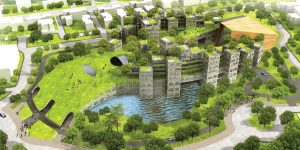
Mandiri University | Photo by DCM Jakarta
I have a dream to create what some people call land art, which is a form of earth architecture that can keep internal spaces cool.
Your concerns with the environment, nature and sustainable architecture are part of a package of the strengths of your design concept. Is your standard related to your firm’s design philosophy?
We prefer to work in projects in which we could reduce energy usage. Currently, we are designing RA Apartment Hotel that uses double skin and flowering plants in the facade to reduce direct sun penetration.
Jakarta 30:30 has been proclaimed by the DKI Jakarta government to reduce emissions by 30 per cent until 2030. What is your opinion on this matter?
Jakarta, under the current and previous City’s Architectural Advisory Board (TPAK) has introduced stringent Green rules and regulations. They are realistic and successful in their application to Green building construction in Jakarta.
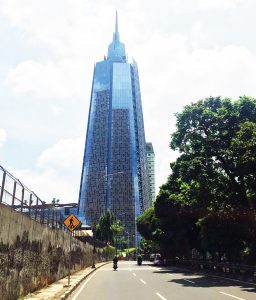
Kompas Multimedia Tower | Photo by DCM Jakarta
Are you optimistic that environmentally focused designs will become common in Jakarta and throughout Indonesia?
In the 30 years of designing high-rise buildings in Jakarta, the quality of the high-rise towers and their sustainability have increased tremendously. DCM towers always apply double skins and advanced unitised glazing systems for their facades. The mechanical electrical systems are now more energy efficient. Structural engineering against earthquakes is more fine-tuned and supported by our concrete that has superior strength and better quality.
What will be your future Green architecture-related project that might be the next new breakthrough?
We are currently designing a new training campus and dormitories for Bank Mandiri, named Mandiri University, which will grow out as a man-made hill in Jakarta. This project will be an ideal environment for learning and connectivity.
What is your big dream that you want to realise in the future?
I have a dream to create what some people call land art, which is a form of earth architecture that can keep internal spaces cool. It would be the kind of architecture that blends building into the landscape, like in Maya Sanur, Mandiri University and University of Indonesia’s main library.

 Malaysia
Malaysia Hong Kong
Hong Kong Singapore
Singapore Tiếng Việt
Tiếng Việt ประเทศไทย
ประเทศไทย

